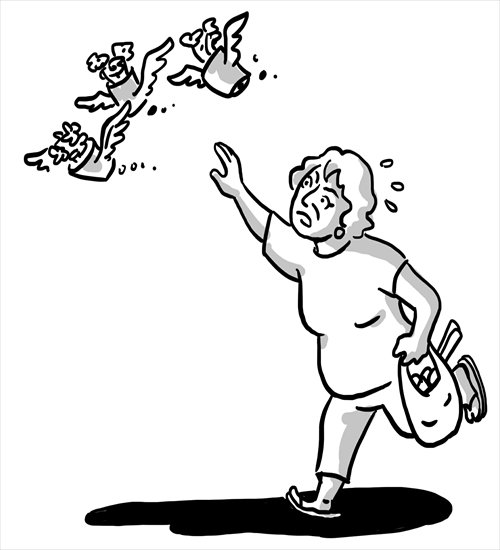Bright cities don't need costly flowers

Illustration: Liu Rui/GT
One month after the National Day holiday each year, there is always a special wave of hustle and bustle among the older people in my neighborhood. While gardeners sent by the Beijing municipal government arrive to withdraw the decorations, there is a tacit rule that civilians can take as many potted flowers as they want.
Thus every single year, there is a mid-November morning when I walk by older people who are in full swing to grasp flowers home as quickly as possible. They bring plastic bags, so that they can take multiple pots each time. Kids are also brought by some to lend a helping hand. Therefore, the withdrawal project often turns into a lightning battle; flowers, especially the intact ones, can disappear within a few minutes of grabbing.
This scene came into my mind when I read the news that decorations in Beijing for this year's National Day holiday would be streamlined, which is part of the frugality campaign launched by the new leadership. Smaller and simpler arrangements, I guess, will be welcomed by everybody, and the only group that may feel lost would be the old folk who will lose their free lunch.
Last September, Beijing's colossal decoration budget for the National Day holiday caused quite a stir. Just the Chaoyang district announced to spend 50 million yuan ($8.17 million) on flowers. According to the official plan, 26 displays were laid out, containing more than 2 million pots of flowers. The numbers in 2011 were equally big. Over 80,000 square meters were covered by 6.5 million flowers in Chaoyang, and throughout Beijing there were 20 million pots.
Some criticized this as squandering taxpayers' money, especially since many of the flowers can only survive for one or two months.
But a more important reason for the unnecessity of such flower projects lies in the passage of time. The symbolic meaning of sudden public decoration during festivals has faded.
A few decades ago, when cities were monochrome, colorful flowers could instantly bring a festive atmosphere. This was also why new clothes and meat were especially cherished in the childhood memories of many Chinese.
But just as families no longer lack meat or new clothes, there's no lack of floral arrangements in today's China.
Every April and September, the city's gardening authorities initiate floral projects to embrace the Labor Day and National Day holidays. But the street scene is already colorful enough in ordinary months.
Moreover, even if the decoration service was indispensable, it could be done through market forces. For instance, when big festivals come, like National Day, Labor Day, or imported ones like Christmas and Valentine, shopping mall owners and commercial real estate operators are more than willing to decorate plazas or alleys around in a well-trimmed and very attractive way.
Downstairs from my office building, when festivals come, trees are covered in sparkling blue lights in evening. A festive atmosphere naturally spills out.
The latest streamlining order for the upcoming National Day holiday signals a step forward. The flower preparations will be finished by September 25, and then last 25 days. There will be no large-scale arrangements in municipal government buildings, and the decorations will be much simpler in Tiananmen Square as well. One gardening business owner told media that he has lost 60 to 70 percent of fixed customers.
After the losses to high-end restaurants, expensive wines and luxury mooncakes, now the gardening business is another field that is undertaking shocks due to the launching of the frugality and anti-graft drive. This list of taboos will grow longer.
The author is an opinion editor with the Global Times. chenchenchen@globaltimes.com.cn